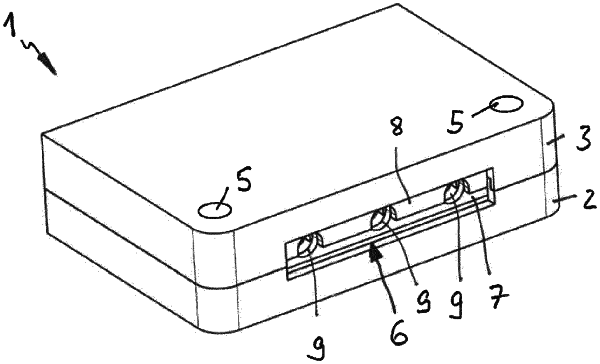| CPC F16L 3/10 (2013.01) [F16L 3/222 (2013.01); F16L 3/223 (2013.01)] | 9 Claims |

|
1. A cable bushing having a two-part, frame-shaped housing, which has a lower housing part and an upper housing part, which parts form a passage opening in an installed position,
wherein a first sealing element composed of an elastic material is inserted into the lower housing part and a second sealing element composed of an elastic material is inserted into the upper housing part,
wherein the first and second sealing elements close off the passage opening in the installed position, forming adjacent tubular cable bushing channels, which, viewed in an axial introduction direction, form multiple sealing regions, one behind the other, having a reduced cross-section from an outside to an inside, so that a corresponding cable bushing channel formed by semi-tubular recesses in a corresponding sealing element is suitable for sealing off different cable diameters,
wherein each sealing element has multiple parallel longitudinal walls, spaced apart from one another by means of longitudinal grooves, extending transverse to the introduction direction, in each instance,
wherein an innermost longitudinal wall, seen in the introduction direction, is closed off, and for forming the corresponding cable bushing channel, the other longitudinal walls have semi-tubular recesses that have a decreasing radius from an outermost to a second innermost longitudinal wall,
wherein transverse ridges are formed between adjacent cable bushing channels in one sealing element, at a right angle to the longitudinal walls and having a height that is equal to the height of the longitudinal walls, and recesses that are complementary to the ridges are formed in the longitudinal walls in the other sealing element, the transverse ridges in the installed position engaging into the recesses,
wherein in the installed position, the longitudinal walls engage partially into the corresponding longitudinal groove of the one sealing element or the other.
|